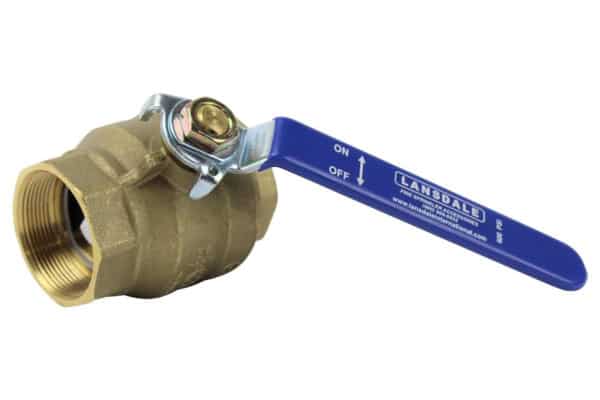Trim valves perform a necessary role in water-based fire protection systems by supporting the proper function of critical components
Many parts of fire sprinkler and standpipe systems ensure that water gets from a source to a destination quickly, safely, and effectively. Other components help building owners and fire protection professionals ensure that their systems will perform as expected in an emergency.
In fire protection, many trim valves belong to the second category, making inspection, monitoring, maintenance, and testing simpler. In this article, we’ll provide an overview of common trim valve types, providing an overview of what they are, how they function, and what the National Fire Protection Association (NFPA) says about these helpful devices.
Already know what you need? Feel free to hop on over and view our selection of valves, including:
Trim valves play a supporting but crucial role in fire protection systems
Within a fire sprinkler system, there are many parts and pieces that make up the whole. While most focus centers on the main components of the system (e.g., sprinklers), there are many supplementary parts that contribute to accuracy, dependability, and overall function.
The biggest selection of additional parts is known as trim valves. In a certain sense, these valves “trim” by setting—and keeping—things in good order. They limit the flow of water, relieve pressure, facilitate drainage, and even assist inspectors in testing fire sprinkler and standpipe systems.
Many of these trim valves are comparable to valves found in other water-based systems. Often, those used in fire protection are also well-suited for use in plumbing or other piping systems. And some trim valves with the right characteristics can perform a supporting role in fire protection systems. However, it’s worth noting that some valves are specifically tested, approved, and rated for specific applications.
Three-way valves simplify pressure testing in fire sprinkler and standpipe systems
A three-way valve for fire protection has one inlet and two outlets. Using a handwheel, a three-way valve diverts the flow of water to one of two outlets. When properly sized, these valves can be a useful tool for testing or performing maintenance on the system. Most three-way valves are made of brass.
1/4″ three-way valves with National Pipe Thread (NPT) are often used with air or water pressure gauges. One outlet can be permanently connected to a pressure gauge used to monitor the system pressure, while the other outlet allows water to flow elsewhere.
During testing, an inspector can quickly add another pressure gauge in the second outlet. And if a pressure gauge needs to be removed and replaced, flow can be diverted away from the gauge. This allows for instant removal of the pressure gauge with no need to shut off the supply of water to the sprinkler or standpipe system.
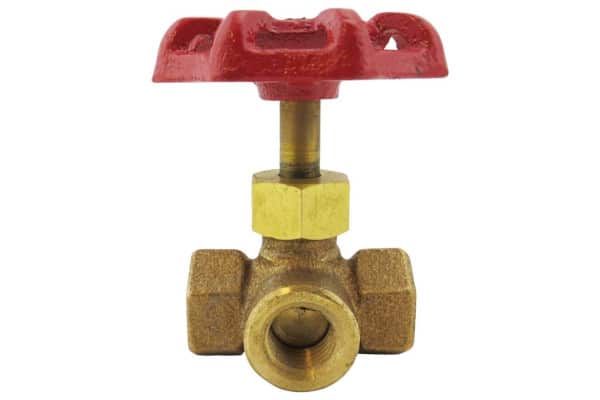
Angle valves can throttle, stop, or drain water in fire protection systems
An angle valve has two primary purposes: trimming and draining. These trim valves regulate the flow of liquid or air through the system. Air or fluid entering the angle valve is pushed through at a right angle, from the bottom through the opening at the side.
Angle valves for fire protection are manually operated. They’re typically made of either brass or cast brass, and often available in sizes ranging from 1/2″ to 2″. 2″ angle valves can serve as a system drain at the riser. They are also suitable for use on alarm check valves and grooved shotgun check valve riser assemblies.

Ball valves, frequently used as drain valves, can be extended with sight glasses
A ball valve has an internal rotational ball that allows this type of trim valve to rotate to an open or closed position with a quarter-turn. A ball valve can control the flow of water, drain the system, or even be paired with a sight glass for observation of flow. Ball valves provide speedy opening and closure but not precise throttling.
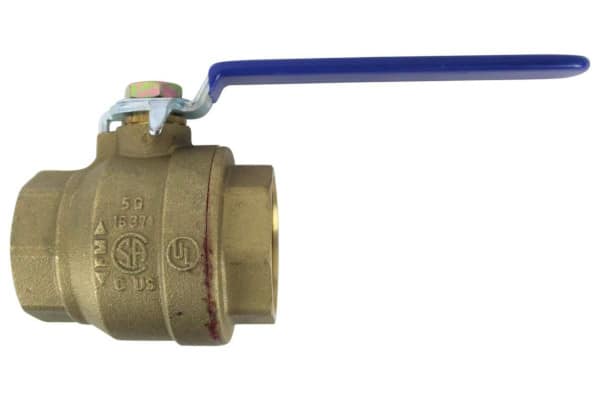
In-line check valves prevent water from flowing in the wrong direction
Like other check valves, an in-line check valve is designed to permit the flow of water and prevent backflow. Backflow occurs when water flowing into the system travels backward, usually unintentionally, to the source.
This type of trim valve features a lifting spring. Pressure applied to the upstream end of the valve mobilizes the spring and allows water to flow through. If the pressure decreases beyond a set limit, the lifting spring lowers so that water can no longer pass through.
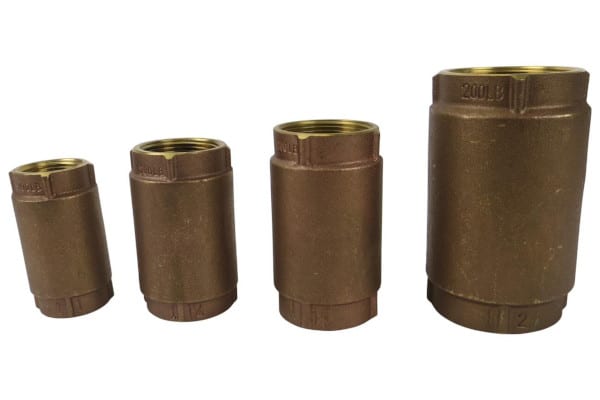
Swing check valves also prevent backflow, but with a swinging internal disc
A swing check valve also only permits water to flow in one direction within a fire sprinkler or standpipe system. It’s known as a swing check valve because its internal disc swings closed to stop backflow, or opens to permit flow. These kinds of trim valves can cause water hammer—a sudden and sometimes damaging increase in pressure—when flows start or stop rapidly.
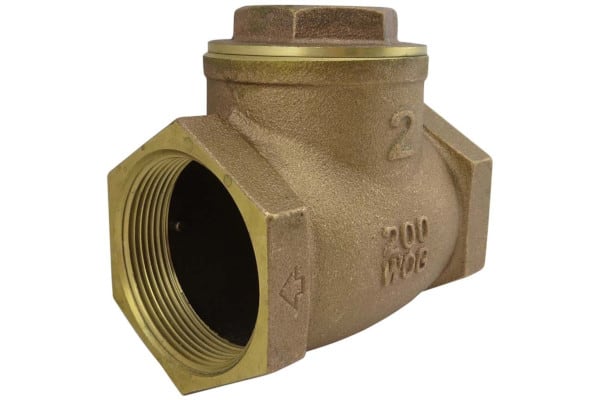
Pressure relief valves prevent overpressurization of sprinkler or standpipe system piping
Changes in temperature or pressure surges from other sources sometimes increase pressure in system piping. Pressure-relief valves for fire protection systems remove some of that excess pressure.
NFPA 13: Standard for the Installation of Sprinkler Systems adds that wet-pipe fire sprinkler systems lacking an auxiliary air reservoir—a device used to absorb pressure increases—require pressure relief valves. These valves should be placed downstream from all pressure-reducing valves.
From the 2022 edition of NFPA 13
8.1.2 Relief Valves.
8.1.2.1 Unless the requirements of 8.1.2.2 are met, a wet pipe system shall be provided with a listed relief valve not less than 1⁄2 in. (15 mm) in size and set to operate at 175 psi (12 bar) or 10 psi (0.7 bar) in excess of the maximum system pressure, whichever is greater.
8.1.2.2 Where auxiliary air reservoirs are installed to absorb pressure increases, a relief valve shall not be required.
Unlike other types of trim valves discussed in this article, NFPA requires these valves to be specifically evaluated or tested by a third party—”listed”—for use in fire sprinkler systems.
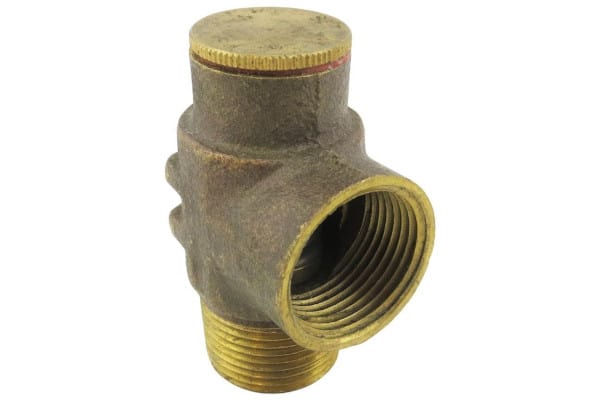
Globe valves allow users to throttle, start, or stop flows in fire sprinkler or standpipe systems
Globe valves are named for their spherical body shape. Using a movable disc or plug, they make it easy to reduce or increase flow with precision. While other valve types do best when fully opened or closed, globe valves handle partial flows effectively.
Their main purpose in a fire sprinkler system is to limit the flow of water. Globe valves inhibit the free flow of water and force it into a Z-pattern. That limits the amount that can pass through at one time.

The National Fire Protection Association offers only limited guidance on trim valves
NFPA 13 doesn’t offer a lot of guidance on the subject of trim valves. The standard refers to valves in a more overall and general sense, with the exception of specific sections covering check valves, control valves, and pressure-relief valves.
Click here for an introduction to check valves, here for a look at butterfly control valves, or here for a guide to OS&Y control valves.
NFPA 25: Standard for the Inspection, Testing, and Maintenance of Water-Based Fire Protection Systems loosely defines trim valves as peripheral equipment to the primary equipment. It sets standards for inspection, testing, and maintenance of some trim items, but not all, in chapter 13.
Replace or add a trim valve to your fire protection system
QRFS offers a wide selection of brass and cast-brass trim valves designed to meet the needs of fire sprinkler and standpipe systems. We stock valves in sizes ranging from 1/4″ to 4″ with UL listings and FM approvals available for select models that require them.
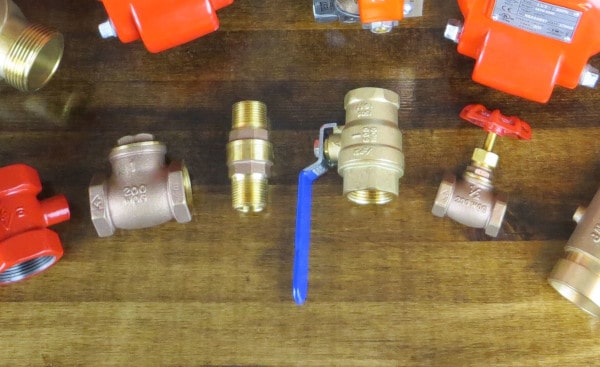
When you purchase through QRFS, you benefit from our quality customer service and customer dedication. It’s our goal to remain up to date on NFPA standards and industry best practices to help you make the most informed selection possible.
View our selection of valves, including:
Questions about trim valves for fire protection? Call us at +1 (888) 361-6662 or send us an email at support@qrfs.com.
This blog was originally posted by Jason Hugo and Anna Hartenbach at blog.qrfs.com on August 10, 2017, and updated on February 10, 2023. If this article helped you find a trim valve for your fire protection system, check us out at Facebook.com/QuickResponseFireSupply or on Twitter @QuickResponseFS.


